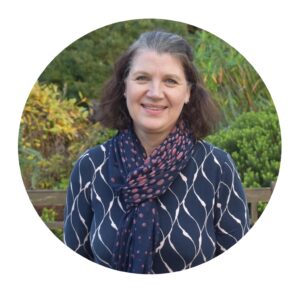Vicki Havercroft Dixon (@vjhavercroft), Lead Cancer Nurse – Hampshire Hospitals NHS Foundation Trust, Florence Nightingale Leadership Scholar 2021/22 @FNightingaleF
In May 2021 I was successful in starting the next part of my nursing leadership journey by commencing as a Florence Nightingale Foundation leadership scholar. Then in September 2021, after nearly 25 years at the same trust, the scholarship gave me the confidence to look outside my comfort zone and I started as the Lead Cancer Nurse at a district general hospital (DGH); a trust which had been part of a merger 10 years previously.
Prior to my commencement in the lead nurse role, the trust had been plagued by inconsistent nursing and AHP leadership and management structures within cancer services. Cancer specialist roles such as the Clinical Nurse Specialist (CNS), Cancer Support Worker (CSW), and Cancer Specialist Allied Health Professionals (AHP) were not well understood or recognised.
The Cancer Alliance (2019) highlighted significant gaps in the cancer workforce, with Macmillan (2021)echoing this and the negative impact on patient care (‘Cancer nursing on the line: why we need urgent investment across the UK’). These unfavourable reports informed my first priority as lead cancer nurse, which was to undertake a cancer workforce review. Fortuitously, a trust wide workforce review had just begun, which I linked into. The addition of financial pressures at the trust meant that regardless of the workforce review recommendations, the focus had to be on finding creative and innovative solutions.
Other than NICE guidance for CNS and AHPs in the lung cancer pathway, there is no agreed workforce model to inform what an ideal CNS and AHP workforce should look like. Co-production with patients is the key to success. The local patient engagement group are a strong voice, working to support the trust in making positive changes.
The most surprising finding from my workforce review, was that despite two acute hospitals merging 10 years earlier to form one trust, it did not function uniformly. Nursing, multidisciplinary teams (MDT) and medical teams remained quite separate with little or no cross cover. Cancer specialist AHPs were non-existent at one of the sites. This left little opportunity for innovative working and service development.
Summary of findings:
| Positives | Negatives |
| Band 4s well supported | Band 7s not supported |
| Band 6s supported | Little or no collaboration between tumour site specific teams on the different hospital sites |
| Significant variations on how teams work, what is viewed as ‘normal business’ and what they see as extra and a burden on their time | |
| Teams that were managed by the Operational Services Managers (OSM) were less likely to have regular catch ups, meaningful appraisals, and a vision to move services forward | |
| Lack of data around the nursing teams due to the current electronic IT system not being able to pull all the required data | |
| Lack of job plans by some teams | |
| Lack of cover during periods of sickness and annual leave | |
| Lack of education around supporting patients’ psychological needs |
Summary of recommendations
- Cross site working for all teams
- Clear nursing management / leadership structure
- Increase in roles such as Cancer Pathway navigators and Cancer Support Workers, some could be combined roles giving continuity across the whole pathway.
- Improving digital platforms, such as My Medical Record and Electronic Holistic Needs Assessments
- Expansion of the supportive care hub to cover all hospital sites to ensure there is equity of care for all the trust’s cancer patients
- Expansion of Patient Stratified Follow Up (PSFU) across more tumour sites
- Investment required in upskilling teams to include enhanced skills such as non-medical prescribing, taking biopsies, etc.
- Investment in cancer specific AHPs, across all AHP services with the potential of moving the cancer AHP workforce across to cancer services
- Increase the number of advanced clinical practitioners (ACP) across cancer
- Provision of an outreach Acute Oncology Service (AOS)
- Ensure all staff band 6 and above have advanced communication training and / or psychological skills level 2 training
- Ensure that job profiles and job plans are consistent and link with the new HEE ACCEND programme.
Supporting teams to work collaboratively across site early on in a trust merger is key to ensuring that all patients with cancer receive equitable care.
This key piece of work demonstrates that more nurses is not always the answer but working differently and utilising the wider workforce may be the solution to better patient care and a more satisfied workforce. . There are many nursing roles that would sit more appropriately with support workers, cancer specialist AHPs and ACPs.
I initially concluded that a further 24 CNSs would resolve workforce issues within Cancer services, however, deeper exploration and understanding of the wider workforce suggests just 5 additional CNS posts and additional support worker roles, and specialist AHP’s would be a more effective solution.
References:
- Lung Cancer: diagnosis and management [internet] 2019. Available from: https://www.nice.org.uk/guidance/NG122
- NHS England. NHS Long Term Plan [internet] 2019. Available from: longtermplan.nhs.uk
- Forgotten Cancer Nursing Report [internet] 2021. Available from: Forgotten-C-Nursing-Report_tcm9-360416.pdf (macmillan.org.uk)
- Wessex Cancer Alliance. Cancer Workforce Strategy [internet] 2022. Available from: Cancer Workforce Strategy 2022-2025 – Welcome to Wessex Cancer Alliance